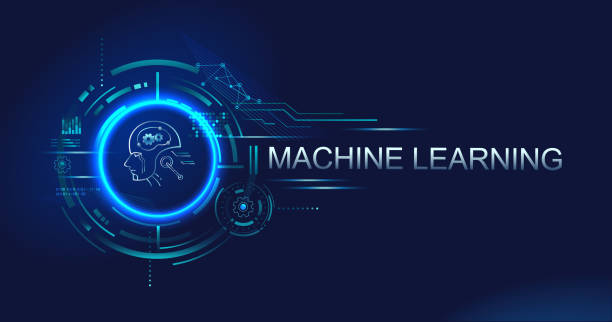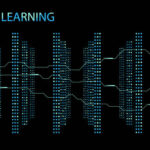Understanding the Fundamentals of Machine Learning
Before diving into complex algorithms and neural networks, it’s essential to grasp the foundational concepts of machine learning. Machine learning (ML) is a subset of artificial intelligence (AI) that enables systems to learn from data and improve without explicit programming. At its core, machine learning uses statistical techniques to give computers the ability to “learn” patterns and make predictions or decisions.
There are three primary types of machine learning:
-
Supervised Learning: Learning with labeled data (e.g., regression, classification).
-
Unsupervised Learning: Learning from unlabeled data (e.g., clustering, dimensionality reduction).
-
Reinforcement Learning: Learning through trial and error, receiving rewards or penalties.
Mastering these paradigms is crucial to becoming proficient in ML.
Step-by-Step Roadmap to Learn Machine Learning
1. Build a Strong Foundation in Mathematics and Statistics
Mathematics forms the backbone of machine learning. To truly understand how ML algorithms work under the hood, learners should master the following topics:
-
Linear Algebra: Vectors, matrices, eigenvalues/eigenvectors
-
Calculus: Derivatives, gradients, partial derivatives, chain rule
-
Probability and Statistics: Bayes’ theorem, distributions, statistical inference
-
Optimization: Gradient descent, convex optimization
Resources:
-
Khan Academy for basics
-
MIT OpenCourseWare for in-depth learning
2. Learn Programming – Python Is the Industry Standard
Python is the de facto language for machine learning, thanks to its readability and the powerful libraries it offers. Key libraries include:
-
NumPy and Pandas for data manipulation
-
Matplotlib and Seaborn for data visualization
-
Scikit-learn for classical ML models
-
TensorFlow and PyTorch for deep learning
Familiarity with Jupyter Notebooks, version control with Git, and working in virtual environments will significantly streamline your workflow.
3. Master Data Preprocessing and Feature Engineering
The quality of input data often determines the performance of machine learning models. Key skills in this stage include:
-
Cleaning datasets: Handling missing values, duplicates, inconsistent formatting
-
Normalization and Standardization: Bringing all data to a common scale
-
Encoding categorical variables: Using techniques like one-hot encoding
-
Feature selection and extraction: Identifying the most relevant variables
Spend significant time here—it’s said that 80% of the work in ML is data wrangling.
4. Understand and Implement Core Machine Learning Algorithms
Focus on learning how and when to use key machine learning algorithms, including:
-
Linear Regression
-
Logistic Regression
-
Decision Trees and Random Forests
-
K-Nearest Neighbors (KNN)
-
Support Vector Machines (SVM)
-
Naive Bayes
-
Gradient Boosting (XGBoost, LightGBM)
Each algorithm has its strengths and weaknesses. Study their mathematical intuition, hyperparameters, and real-world applications.
5. Explore Model Evaluation and Tuning
Creating a model is only part of the story. Evaluating its effectiveness is critical. Learn about:
-
Confusion Matrix, Precision, Recall, F1-Score
-
Cross-validation and train/test split
-
ROC-AUC, log-loss, and mean squared error
-
Hyperparameter tuning using GridSearchCV and RandomSearch
Mastering these tools ensures that your models are not just accurate but also robust and generalizable.

6. Dive into Deep Learning and Neural Networks
Once you’re comfortable with traditional ML, start exploring deep learning, a powerful subset ideal for handling unstructured data like images, audio, and text. Start with:
-
Perceptrons and Multilayer Perceptrons (MLPs)
-
Convolutional Neural Networks (CNNs) for image recognition
-
Recurrent Neural Networks (RNNs) and LSTMs for time series and text
-
Transformers and BERT/GPT for NLP tasks
Frameworks like TensorFlow and PyTorch are essential here. Hands-on projects solidify understanding.
7. Work on Real-World Projects and Build a Portfolio
The best way to learn is by doing. Apply your knowledge to:
-
Kaggle competitions
-
Open-source contributions
-
Personal projects like spam detectors, recommendation systems, and sentiment analysis
A solid portfolio is crucial for job interviews and demonstrating your skills. Focus on problem-solving, storytelling with data, and clear documentation.
8. Understand Machine Learning in Production
Knowing how to train models isn’t enough. Learn how to deploy and monitor them in real environments:
-
Model serialization: Saving with Pickle, Joblib
-
REST APIs using Flask or FastAPI
-
Docker and Kubernetes for containerization and scaling
-
Model monitoring: Drift detection, model performance over time
These skills are vital for working in a professional ML environment.
Recommended Learning Resources
-
Books:
-
Hands-On Machine Learning with Scikit-Learn, Keras, and TensorFlow by Aurélien Géron
-
Pattern Recognition and Machine Learning by Christopher Bishop
-
-
Courses:
-
Coursera’s Machine Learning by Andrew Ng
-
Deep Learning Specialization by DeepLearning.AI
-
Fast.ai’s Practical Deep Learning
-
-
YouTube Channels:
-
StatQuest with Josh Starmer
-
3Blue1Brown (especially for neural networks)
-
Stay Updated With the Latest Trends
Machine learning evolves rapidly. Stay current with:
-
ArXiv papers
-
ML-focused newsletters (e.g., Import AI, Data Elixir)
-
Tech blogs by Google AI, OpenAI, Facebook Research
-
Conferences: NeurIPS, ICML, CVPR, ACL
Consistent learning and community involvement are key to staying ahead.
Conclusion
Learning machine learning is a journey that requires discipline, curiosity, and consistent practice. From mastering the mathematical foundations to deploying models in real-world applications, every step builds your confidence and capability in this transformative field. By following a structured path and applying your knowledge to hands-on projects, you can build a successful career in ML and contribute meaningfully to technological innovation.




Pingback: How to Become an Expert in Deep Learning - Tech